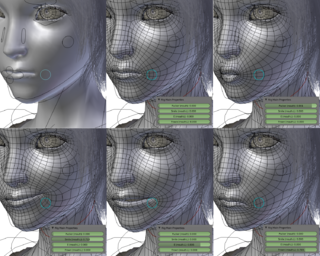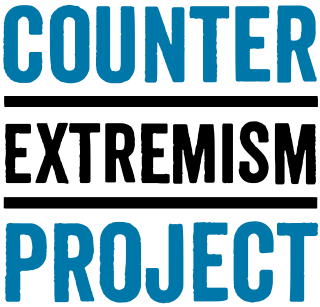
Digital forensics is a branch of forensic science encompassing the recovery, investigation, examination, and analysis of material found in digital devices, often in relation to mobile devices and computer crime. The term "digital forensics" was originally used as a synonym for computer forensics but has expanded to cover investigation of all devices capable of storing digital data. With roots in the personal computing revolution of the late 1970s and early 1980s, the discipline evolved in a haphazard manner during the 1990s, and it was not until the early 21st century that national policies emerged.

The University of California, Berkeley, School of Information, also known as the UC Berkeley School of Information or the I School, is a graduate school and, created in 1994, the newest of the schools at the University of California, Berkeley. It was previously known as the School of Information Management and Systems (SIMS) until 2006. Its roots trace back to a program initiated in 1918 which became the School of Librarianship in 1926 and, with a broader scope, the School of Library and Information Studies in 1976. The program is located in the South Hall, near Sather Tower in the center of the campus.
Ramesh Chandra Jain is a scientist and entrepreneur in the field of information and computer science. He is a Bren Professor in Information & Computer Sciences, Donald Bren School of Information and Computer Sciences, University of California, Irvine.

Human image synthesis is technology that can be applied to make believable and even photorealistic renditions of human-likenesses, moving or still. It has effectively existed since the early 2000s. Many films using computer generated imagery have featured synthetic images of human-like characters digitally composited onto the real or other simulated film material. Towards the end of the 2010s deep learning artificial intelligence has been applied to synthesize images and video that look like humans, without need for human assistance, once the training phase has been completed, whereas the old school 7D-route required massive amounts of human work .

James F. O'Brien is a computer graphics researcher and professor of computer science and electrical engineering at the University of California, Berkeley. He is also co-founder and chief science officer at Avametric, a company developing software for virtual clothing try on. In 2015, he received an award for Scientific and Technical Achievement from the Academy of Motion Pictures Arts and Sciences.
Computational criminology is an interdisciplinary field which uses computing science methods to formally define criminology concepts, improve our understanding of complex phenomena, and generate solutions for related problems.

S. Shankar Sastry is the Founding Chancellor of the Plaksha University, Mohali and a former Dean of Engineering at University of California, Berkeley.

Jitendra Malik is an Indian-American academic who is the Arthur J. Chick Professor of Electrical Engineering and Computer Sciences at the University of California, Berkeley. He is known for his research in computer vision.
PhotoDNA is a proprietary image-identification and content filtering technology widely used by online service providers.

The Counter Extremism Project (CEP) is a non-profit non-governmental organization that combats extremist groups "by pressuring financial support networks, countering the narrative of extremists and their online recruitment, and advocating for strong laws, policies and regulations".

Hao Li is a computer scientist, innovator, and entrepreneur from Germany, working in the fields of computer graphics and computer vision. He is co-founder and CEO of Pinscreen, Inc, as well as associate professor of computer vision at the Mohamed Bin Zayed University of Artificial Intelligence (MBZUAI). He was previously a Distinguished Fellow at the University of California, Berkeley, an associate professor of computer science at the University of Southern California, and former director of the Vision and Graphics Lab at the USC Institute for Creative Technologies. He was also a visiting professor at Weta Digital and a research lead at Industrial Light & Magic / Lucasfilm.
The Cyber Civil Rights Initiative (CCRI) is a non-profit organization founded by Holly Jacobs in 2012. The organization offers services to victims of cybercrimes through its crisis helpline. They have compiled resources to help victims of cybercrimes both in America and internationally. CCRI's resources include a list of frequently asked questions, an online image removal guide, a roster of attorneys who may be able to offer low-cost or pro-bono legal assistance, and a list of laws related to nonconsensual pornography and related issues. CCRI publishes reports on nonconsensual pornography, engages in advocacy work, and contributes to updating tech policy. CCRI offers expert advice to tech industry leaders such as Twitter, Facebook, and Google regarding their policies against nonconsensual pornography. CCRI is the lead educator in the United States on subject matter related to nonconsensual pornography, recorded sexual assault, and sextortion.

Ian J. Goodfellow is an American computer scientist, engineer, and executive, most noted for his work on artificial neural networks and deep learning. He was previously employed as a research scientist at Google Brain and director of machine learning at Apple and has made several important contributions to the field of deep learning including the invention of the generative adversarial network (GAN). Goodfellow co-wrote, as the first author, the textbook Deep Learning (2016) and wrote the chapter on deep learning in the authoritative textbook of the field of artificial intelligence, Artificial Intelligence: A Modern Approach.
Deepfakes are synthetic media that have been digitally manipulated to replace one person's likeness convincingly with that of another. Deepfakes are the manipulation of facial appearance through deep generative methods. While the act of creating fake content is not new, deepfakes leverage powerful techniques from machine learning and artificial intelligence to manipulate or generate visual and audio content that can more easily deceive. The main machine learning methods used to create deepfakes are based on deep learning and involve training generative neural network architectures, such as autoencoders, or generative adversarial networks (GANs). In turn the field of image forensics develops techniques to detect manipulated images.

Video manipulation is a type of media manipulation that targets digital video using video processing and video editing techniques. The applications of these methods range from educational videos to videos aimed at (mass) manipulation and propaganda, a straightforward extension of the long-standing possibilities of photo manipulation. This form of computer-generated misinformation has contributed to fake news, and there have been instances when this technology was used during political campaigns. Other uses are less sinister; entertainment purposes and harmless pranks provide users with movie-quality artistic possibilities.
Digital cloning is an emerging technology, that involves deep-learning algorithms, which allows one to manipulate currently existing audio, photos, and videos that are hyper-realistic. One of the impacts of such technology is that hyper-realistic videos and photos makes it difficult for the human eye to distinguish what is real and what is fake. Furthermore, with various companies making such technologies available to the public, they can bring various benefits as well as potential legal and ethical concerns.
Synthetic media is a catch-all term for the artificial production, manipulation, and modification of data and media by automated means, especially through the use of artificial intelligence algorithms, such as for the purpose of misleading people or changing an original meaning. Synthetic media as a field has grown rapidly since the creation of generative adversarial networks, primarily through the rise of deepfakes as well as music synthesis, text generation, human image synthesis, speech synthesis, and more. Though experts use the term "synthetic media," individual methods such as deepfakes and text synthesis are sometimes not referred to as such by the media but instead by their respective terminology Significant attention arose towards the field of synthetic media starting in 2017 when Motherboard reported on the emergence of AI altered pornographic videos to insert the faces of famous actresses. Potential hazards of synthetic media include the spread of misinformation, further loss of trust in institutions such as media and government, the mass automation of creative and journalistic jobs and a retreat into AI-generated fantasy worlds. Synthetic media is an applied form of artificial imagination.
Deepfake pornography, or simply fake pornography, is a type of synthetic porn that is created via altering already-existing pornographic material by applying deepfake technology to the faces of the actors. The use of deepfake porn has sparked controversy because it involves the making and sharing of realistic videos featuring non-consenting individuals, typically female celebrities, and is sometimes used for revenge porn. Efforts are being made to combat these ethical concerns through legislation and technology-based solutions.
An audio deepfake is a type of artificial intelligence used to create convincing speech sentences that sound like specific people saying things they did not say. This technology was initially developed for various applications to improve human life. For example, it can be used to produce audiobooks, and also to help people who have lost their voices to get them back. Commercially, it has opened the door to several opportunities. This technology can also create more personalized digital assistants and natural-sounding text-to-speech as well as speech translation services.
Identity replacement technology is any technology that is used to cover up all or parts of a person's identity, either in real life or virtually. This can include face masks, face authentication technology, and deepfakes on the Internet that spread fake editing of videos and images. Face replacement and identity masking are used by either criminals or law-abiding citizens. Identity replacement tech, when operated on by criminals, leads to heists or robbery activities. Law-abiding citizens utilize identity replacement technology to prevent government or various entities from tracking private information such as locations, social connections, and daily behaviors.










